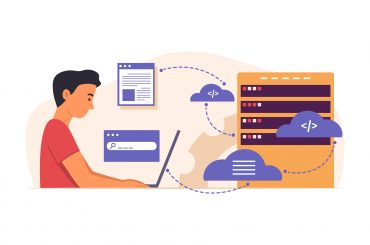Accelerate Your Sales: Expert Tips for Shopify Speed Optimization
Last Updated | April 15, 2024
Table of Contents
In today’s digital age, website speed is a critical factor in determining the success of an online business. Slow-loading websites frustrate users and negatively impact search engine rankings and conversion rates. As a Shopify store owner, ensuring that your website is fast and efficient in attracting and retaining customers is crucial.
This blog provides expert tips and strategies for Shopify speed optimization. We share insights on identifying and addressing common speed issues, such as bulky images, excessive HTTP requests, and inefficient code. By implementing the strategies outlined in this blog, you can significantly improve your website’s speed, enhance the user experience, and ultimately learn everything about Shopify speed optimization.
Shopify Speed Metrics – An Overview
It is essential to understand Shopify speed metrics for effective Shopify speed optimization. Measuring your store’s speed improves the customer experience and overall business. First, we address the different speed key performance indicators (KPIs):
The Shopify web performance dashboard displays three focus areas. These core web vitals are:
- Largest Contentful Paint (LCP) is the time it takes to load your page’s main content. The sweet spot for a good experience is less than 2.5 seconds.
- First Input Delay (FID) reflects how responsive your website feels after the initial load. Good FID is anything below 100 milliseconds.
- Cumulative Layout Shift (CLS) measures the rate at which your page’s layout moves during loading. For the best results, the CLS value should be 0.1 or less.
The tools for measuring your Shopify site speed include:
- The Shopify Web Performance Dashboard is the primary method for checking your Shopify store’s speed. It provides various desktop and mobile insights, historical trends, and performance-related changes.
- Although Google PageSpeed Insights aren’t immediately integrated into Shopify, they offer details about your store’s pages and can provide other optimization recommendations.
Image and Media Optimization
Never underestimate the importance of optimizing media on your website. Images and other types of media significantly impact your store’s speed. To optimize images and media for a better Shopify speed optimization, do this:
Pick The Right Format
There are three formats to choose from:
-
- JPEG. This is the right choice for all product photos. JPEG photos balance file size and quality nicely, and you can even adjust compression to find the right fit.
- PNG. Use this for graphics with sharp lines or transparent backgrounds. A PNG is more significant than a JPEG, but you can use PNG-8 if you’re working with simpler graphics.
- GIF. These are animations that don’t use too much color. Due to their file size, use them for small elements or loading animation, and don’t overdo it.
Compress Without Compromising
To maintain picture quality, compress images to use less space. Several free and paid tools, including the built-in Shopify image resizing tool, do this for you. Depending on your needs, experiment to find a sweet spot when balancing size and quality. Most compression tools use lossy compression, which discards data for smaller files.
Use Lazy Loading
Lazy loading delays loading non-critical images until they are scrolled into view. It prioritizes the initial page load, resulting in faster loading times. Many Shopify themes have lazy loading built into them, and if they don’t, you can edit the theme code or install an application that does it.
Streamlining Your Code and Scripts
Refining your store code and scripts helps reduce the delay in loading times and other forms of friction to improve Shopify page speed optimization. There are three ways to streamline your Shopify code and scripts:
Minifying CSS and Javascript files
This involves reducing all unnecessary characters from your CSS and Javascript files without compromising functionality. The result is smaller files and better loading times. Several tools, including online tools and Shopify options, can be used to minify your code.
Removing Render-Blocking Resources
Any scripts of stylesheets that prevent the browser from rendering entire web pages until they are loaded entirely need to go. These resources slow down the initial page view, resulting in slow or unresponsive web pages.
You can identify render-blocking resources by using a tool like Google PageSpeed insights. The solution for improving Shopify site speed optimization includes:
- Modifying your theme code with <defer> or <asynch>. Your browser will continue rendering the pages while your scripts load in the background.
- Use code-splitting for complex themes that use many scripts. Break down the complex code into small units that load only when necessary.
Optimizing All Third-Party Apps and Scripts
As impressive as third-party apps and integrations are, they may slow down loading times. Enhance your Shopify speed optimization by using third-party integrations to:
- Review app usage regularly to identify essential applications that are in use. Consider removing or deactivating unused applications that slow down page loading times.
- Specific applications may have settings to turn off unwanted features, reducing the amount of code loaded when the page is launched.
- Consider using lightweight alternatives with similar functionality and lower impact on the page speed.
Using Different Caching Techniques
Caching plays an essential role in improving Shopify store speed. There are different caching techniques to pick from, most notably:
Browser Caching
With browser caching, frequently accessed files (images, JavaScript, CSS) are stored on the website visitors’ devices. Whenever the user revisits the website, the browser no longer needs to re-download the files, resulting in faster page load times.
The solution is either to use Shopify’s built-in browser caching functionality or to edit theme files to add cache-control headers. Cache-control headers instruct the browser to store certain files for a specific amount of time before deleting them, speeding up load times.
Server-Side Chacing
With server-side caching, copies of dynamic images (search results, product listings) generated by your Shopify server are stored on the device. If a similar request comes in, the Shopify server will immediately deliver the same cached page instead of regenerating it.
There is no Shopify server-side caching tool, but Shopify apps and third-party plug-ins do the job. These apps control the caching process and automatically update the cache whenever the content changes.
Content Delivery Network (CDN) Integration
CDNs are servers in different locations that store copies of your website’s content. Whenever your store has a visitor, the closest CDN server receives the request. This reduces loading times, particularly for visitors from far-off locations.
With Shopify Plus, you get built-in CDN functionality. Other Shopify plans allow you to integrate third-party CDNs that offer improved security and DDoS protection.
Improving Server Response Times
If you’ve gotten this far, you know several ways to improve your Shopify store speed. However, there is still more.
You can significantly enhance your Shopify store loading speed with improved server response times. Here are some of the best ways to do so:
Upgrading Your Shopify Plan
Consider upgrading your Shopify store plan if your stores have high traffic volume or use complex product catalogs. However, upgrading your Shopify plan costs more money, and this isn’t the best response to improve your store’s server response. Another option would be to monitor your store’s performance and optimize it for the new load.
Monitoring And Optimizing Server Performance
Shopify’s server performance has limitations because store owners don’t have access to the server environment. However, there are other ways to monitor server health. This section covers the tools and strategies to monitor and optimize server performance:
Tools
- The Shopify app store has several applications that let you monitor store performance insights. These tools allow you to identify potential hurdles and traffic spikes that could bottleneck store performance.
- Third-party monitoring tools track server response times and alert you if a significant change occurs. Some common examples include Pingdom and Google Monitoring.
Strategies
- Leverage monitoring tools to find potential causes and reasons for slow server response times based on website data analysis.
- Optimizing Shopify store codes and applications to improve server response time by reducing stress on your server.
Conclusion
Optimizing the speed of your Shopify store is not just a technical necessity but a strategic advantage in today’s competitive e-commerce landscape. Implementing the expert tips outlined in this blog can significantly enhance user experience, boost conversions, and drive more sales. Remember, a fast-loading website is not just a luxury but a fundamental requirement for success in online retail. Take action today to accelerate your sales and stay ahead of the curve.
Investing time and effort into fine-tuning your Shopify store’s performance is an investment in your business’s growth and profitability. Focusing on speed optimization can create a seamless shopping experience that delights customers and encourages repeat purchases. Embrace these tips, monitor your site’s performance regularly, and adapt to evolving trends to ensure your Shopify store remains a high-speed, high-conversion powerhouse in the dynamic world of e-commerce.









